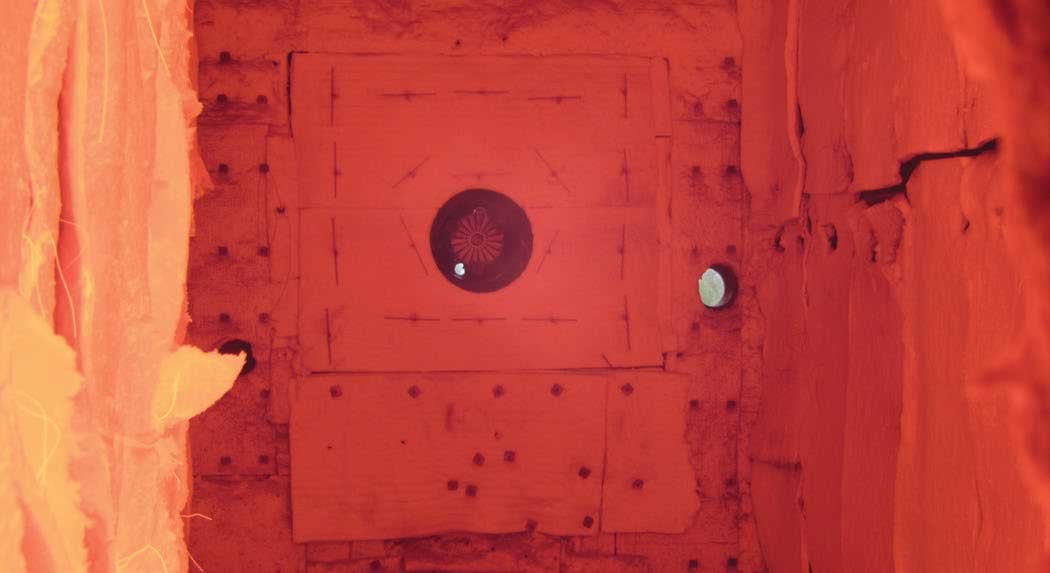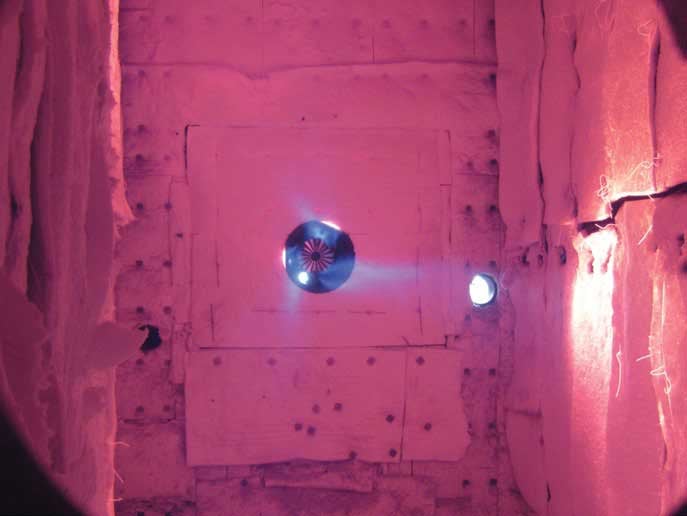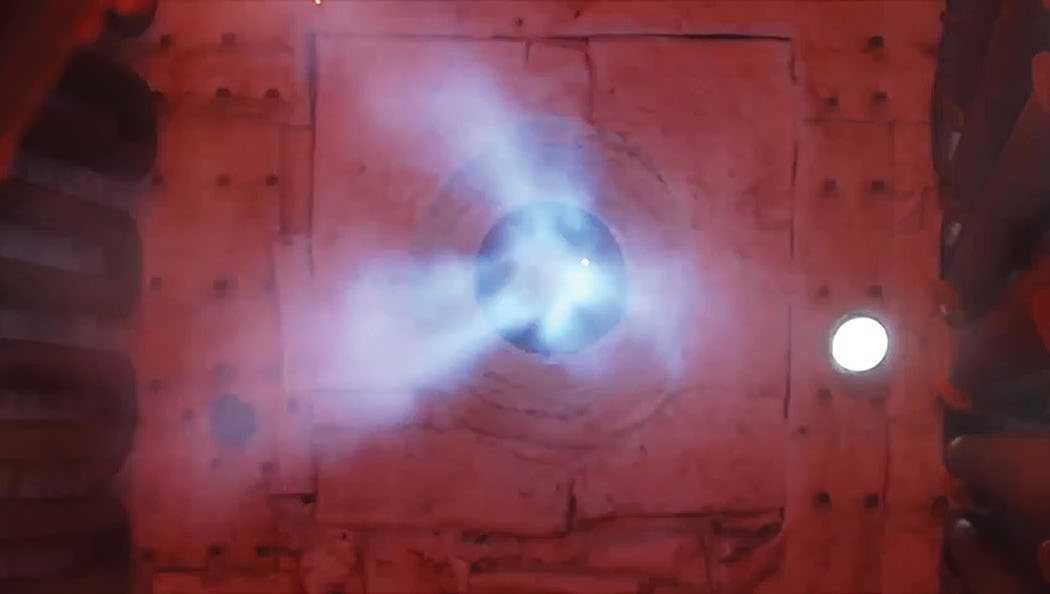Hydrogen – The Alternative Fuel
CATEGORIES:
The combustion characteristics of H2 are vastly different from those of natural gas.

A ZEECO GB low-NOx burner firing 100% H2 gas.
Today’s steam generation market is continuously reshaped by rising fuel costs and new regulations requiring carbon footprint reductions. New regulations require steam generators to reduce their carbon monoxide (CO) and carbon dioxide (CO2) emissions. The two main methods that exist to reduce CO and CO2 emissions are designed to either capture and sequester the carbon in the fuel gas or remove carbon from the fuel prior to firing. Carbon capture from the fuel is becoming the more cost-effective method. Removal of the carbon prior to firing involves reforming natural gas — mainly methane (CH4) — and capturing the carbon atom while utilizing the hydrogen (H2) atoms as a fuel source. Capturing the carbon prior to combustion eliminates the need to outfit each boiler with costly equipment that is necessary to capture and sequester the carbon.
Fuel cost instability also factors into pushing end users to consider alternative fuel sources they may already have at their disposal, such as H2 left over from various reforming and refining processes. Instead of flaring or releasing this excess H2, it can be injected into the fuel gas stream to supplement the main fuel supply. Applying the proper expertise and experience, burning H2 in steam generation systems can greatly reduce operating fuel costs while also helping to meet new carbon emissions regulations.
Burner Design Considerations

A ZEECO GB low-NOX burner firing 20% CO2 and 80% H2 fuel gas.
Burner designs must be evaluated for compatibility with H2 firing to ensure proper and safe operation while firing. The combustion characteristics of H2 are vastly different from those of natural gas. The flame speed in H2 combustion is approximately 5.7 feet per second, while the flame speed of natural gas is significantly slower at only 1.3 ft./s. H2 firing is also characterized by a higher stoichiometric adiabatic flame temperature of 3,960°F, while natural gas has an adiabatic flame temperature of 3,518°F (these measurements are cited from “Combustion – Second Edition” by Irvin Glassman (1987). These significant differences in combustion characteristics require engineers to evaluate the materials used in burner construction and the type of burner used.
Typical burner construction is comprised of metal components and a refractory throat or tile, which require an examination to determine material suitability for H2 firing. The increased flame temperature will require the steel used for nozzle construction, throat construction, and flame stabilizers to be upgraded to a higher grade stainless or alloy capable of withstanding these elevated operating temperatures. Furthermore, the refractory used within the burner will need to be carefully evaluated and its composition modified to withstand the elevated temperatures characteristic of H2 firing.
Beyond withstanding elevated temperatures, the steel used in H2 firing burners needs to be chosen carefully to ensure it is not susceptible to hydrogen embrittlement and high-temperature hydrogen attack. Both phenomenon can prematurely degrade an improperly chosen steel, leading to early failure of the burner parts.
Hydrogen’s flame speed, which is nearly five times that of natural gas, is a fundamental cause of concern when evaluating burner design. Burner designs that utilize lean premix, premix, or rapid premix designs are not suited for a fuel stream that varies in H2 composition. As the composition of H2 increases in the fuel stream, these types of burners become more susceptible to flashback. Flashback occurs when the gas velocity exiting the burner nozzle is slower than the flame speed in a premixed application. Damage to the burner components can result when flashback occurs.
Emission Considerations

A ZEECO GB low-NOX burner firing 100% natural gas.
The next essential topic to understand when considering H2 firing is the impact on burner emissions. Hydrogen’s high flame propagation speed allows the combustion process to occur more rapidly than natural gas. The rapid combustion process releases the combustion energy in a small area, leading to localized elevated near-flame region temperatures, which compound the effect of the inherently high adiabatic flame temperatures on NOx emission rates. Any region with elevated temperatures above 2,500°F is conducive to NOx formation. Field and test facility data have shown that standard low-NOx burners firing H2 typically exhibit an increase in NOx emission rates by up to a factor of 3.
Flue gas recirculation (FGR), steam injection, and/or ultra-low-NOx (ULN) burner technology are required to decrease NOx. FGR is the process that diverts a portion of the flue gas exiting the boiler (typically after the economizer) and introduces it into the combustion air supply. The combustion air supply dilutes with the spent combustion products, which lowers the peak flame temperature during combustion. Small quantities of carefully placed steam injection can also help with polishing NOx by cooling the flame and introducing a small amount of inerting.
Staged ULN burners are another option to combat the increased NOx emissions characteristics associated with firing H2. These types of burners generally use both air and fuel staging mechanisms to decrease peak flame temperature. Properly staged fuel increases the amount of furnace gas able to be entrained into the fuel stream prior to interacting with the air. Entraining furnace gas into the fuel stream is similar to the way FGR mitigates NOx. Properly staging air within the combustion zone delays the mixing of the fuel and air, stretching the combustion process over the furnace’s length. The drawn-out combustion process decreases overall peak combustion temperatures, thereby reducing NOx formation.
Care should be taken to note the differences between staged ULN burners and premix ULN burners. As explained earlier, premix ULN burners are typically not constructed of materials capable of withstanding H2 firing, nor are they able to prevent flashback while firing high H2 fuels.
The H2 content in the fuel stream also has a significant impact on CO and CO2 emissions. As H2 replaces hydrocarbons in the fuel composition, the number of carbon atoms decreases. A fuel stream composed of 100% H2 cannot generate CO nor CO2 as a byproduct of combustion due to the lack of carbon in the combustion reaction. Therefore, the higher the H2 content of a fuel, the lower the overall CO and CO2 emissions. Please see below the basic stoichiometric combustion reaction of a hydrocarbon-based fuel, natural gas, and the combustion reaction of pure H2.
Natural Gas Combustion Reaction:
CH4 + 2(O2 = 3.76N2) =
CO2 + 2H2O + 7.52N2 Equation 1
Hydrogen Combustion Reaction:
2H2 + (O2 + 3.76N2) =
2H2O + 3.76N2 Equation 2
Boiler Impact Considerations
Whenever a new fuel is considered for use in a boiler, a boiler impact study may be recommended to ensure there are no detriments to boiler performance. Likewise, boiler performance should be evaluated when considering H2 as a fuel source. The combustion characteristics of H2 can lead to changes in where and how radiative and convective heat transfer occurs within the boiler, which may adversely impact steam generation rate and steam temperatures.
Based on equations 1 and 2, the stoichiometric air requirement for natural gas is ~720 lbs. of air/ MMBtu, and the stoichiometric air requirement for H2 is ~560 lbs. of air/MMBtu, respectively; therefore, H2 firing needs approximately 30% less mass flow of air as compared to natural gas. Furthermore, H2 can operate with a lower excess air ratio than natural gas due to its higher flammability limit. A lower excess air ratio further reduces the required mass flow of air as compared to natural gas. H2 firing also increases the furnace gas exit temperature (FEGT), primarily due to the higher flame temperatures.
When firing H2, the resulting mass flow reduction through the boiler, combined with higher FEGT, can adversely impact the boiler’s convective heat transfer portions, jeopardizing both steam production and steam quality. However, the addition of mass flow to the system via external FGR can mitigate concerns about higher FEGT and reduced convective heat transfer. The additional FGR mass flow lowers the FEGT and negates any adverse effects on convective heat transfer.
Instrumentation and Controls Considerations
The final topic to be considered when utilizing H2 as a fuel source is the controls and instrumentation required for safe firing. Any burner designed to have a varying fuel composition spanning from natural gas to high H2 content should have a fully metered combustion control system coupled with a Wobbe Index meter or specific gravity meter in some cases. The Wobbe Index meter monitors the varying fuel stream composition and provides the necessary input to the control system to properly adjust the fuel/air ratio control in the combustion control system. The inability to monitor the fuel stream composition and adjust the combustion control system to those changes can lead to a potentially unsafe, fuel-rich condition.
The fuel delivery equipment upstream of the burner should also be evaluated for capacity constraints. H2 requires three times the volumetric fuel flow compared to natural gas to provide the equivalent heat release. Pipe size and engineered fuel train components must be evaluated to ensure proper operation with any fuel, especially when used in any combination with H2.
Flame detection is a critical burner safeguard and is required by all current boiler operating codes. When H2 is present in the combustion process, it generates water vapor. As the H2 content approaches 80% in the fuel stream, most flame scanners available today have difficulty distinguishing and verifying the flame due to the high level of water vapor present. Selecting the proper flame detection equipment is crucial.
Other considerations need to be analyzed to ensure the safe firing of H2 while meeting the environmental limits of the operating jurisdiction. Consultation with an experienced burner supplier who is well-versed in H2 firing is essential in securing your success.
By John Guarco, technical director, boiler burners; Bob Langstine, Regional Sales Manger (Southeastern US & E. Canada), North America; and Michael Turner, design engineer, ZEECO Inc.
Download Article